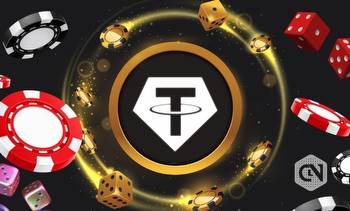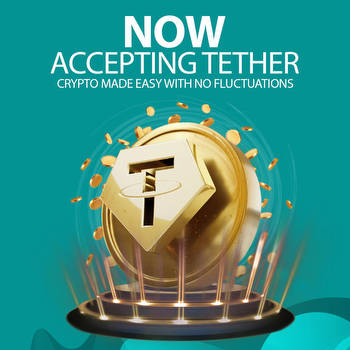The Benefits of Using Stablecoins for Crypto Gambling

The use of stablecoins in the casino industry has increased recently. Stablecoins have gained popularity in the gambling industry due to their stability and the advantages they offer over traditional payment methods.
One might ask why anyone would use a stablecoin for gambling purposes if the primary value of cryptocurrencies lies in their volatility. However, regarding crypto casino games, stablecoins offer unique benefits, making them a preferred payment method for many players.
What Are Stablecoins?
Stablecoins are a special class of cryptocurrencies engineered to maintain a consistent value relative to a specific asset, such as fiat currencies or commodities such as gold.
They achieve this stability by anchoring their value to the price of the designated asset, ensuring that the stablecoin’s value remains comparatively steady and eliminating the volatility typically associated with other cryptocurrencies.
How Do Stablecoins Keep Their Stability?
Stablecoins can maintain a stable value and achieve this through reserved assets that act as collateral for each stablecoin. Typically, stablecoins have a 1:1 ratio, meaning that one stablecoin equals one unit of the reserved asset.
However, there are different methods for achieving stability; for instance, centralized fiat-backed stablecoins rely on an organization or company to regulate the issuance and burning of new coins based on demand. Tether (USDT) is an example of this, where a private custodian monitors the currency and holds a reserve of equivalent collateral.
In contrast, decentralized crypto-backed stablecoins such as Dai (DAI) use smart contracts on the Ethereum blockchain to manage and oversee the collateral without relying on a governing body.
Types of Stablecoins
Various types of stablecoins exist, each using its own mechanism to preserve a stable value. These include:
- Fiat-collateralized stablecoins: These stablecoins are supported by fiat currencies, such as the Euro, US dollar, or Yen. By holding reserves of the respective fiat currency, they maintain their value. Examples of fiat-collateralized stablecoins are USDC, Tether (USDT), and PAX.
- Algorithmic stablecoins: Using algorithms to preserve a stable value, these stablecoins adjust the coin’s supply in response to demand fluctuations. DAI and Ampleforth are examples of algorithmic stablecoins.
- Commodity-collateralized stablecoins: Backed by commodities such as gold or silver, these stablecoins maintain their value by holding reserves of the designated commodity. Additionally, Tether Gold (XAUT) and Digix Gold (DGX) are examples of commodity-collateralized stablecoins.
- Hybrid stablecoins: These stablecoins merge two or more of the mechanisms above to ensure a stable value. Reserve and Terra are examples of hybrid stablecoins.
Overall, stablecoins have become increasingly popular in recent years, particularly in cryptocurrency trading and decentralized finance (DeFi) applications. You can use them as a means of payment, a store of value, or collateral for other financial instruments.
Advantages of Using Stablecoins in Crypto Gambling
Stablecoins have emerged as a game-changing solution in the world of crypto gambling, offering numerous benefits over traditional cryptocurrencies.
By harnessing the advantages of stablecoins, both players and operators can experience a more streamlined, secure, and user-friendly gambling environment.
Enhanced Price Stability
By design, stablecoins maintain a stable value, eliminating the extreme price fluctuations often associated with traditional cryptocurrencies. This stability enables gamblers to play without worrying about sudden changes in the value of their digital assets.
The inherent stability of stablecoins allows players to manage their bankroll better and anticipate potential returns, creating a more predictable gaming experience.
Improved Transaction Efficiency
Stablecoins facilitate quick and efficient transactions, allowing players to deposit and withdraw funds almost instantly, with minimal delays and waiting times.
By using blockchain technology, stablecoin transactions often incur lower fees than traditional payment methods, reducing the overall cost of gambling activities for both operators and players.
Increased Accessibility and Financial Inclusion
Stablecoins enable seamless cross-border transactions, allowing users worldwide to participate in crypto gambling without facing restrictions due to local regulations or currency conversion issues.
With no need for a traditional bank account, stablecoins provide an accessible alternative for the unbanked or underbanked populations, allowing them to engage in online gambling activities.
Enhanced Privacy and Security
Stablecoin transactions on blockchain networks provide a higher degree of privacy, allowing users to maintain their anonymity while participating in online gambling activities.
Blockchain technology ensures the security of stablecoin transactions, reducing the risk of fraud, hacking, or unauthorized access to users’ funds.
Regulatory Compliance and Transparency
As stablecoins are often pegged to traditional assets, such as fiat currencies, they are more likely to comply with existing financial regulations, promoting a safer and more regulated environment for crypto gambling.
The transparent nature of blockchain technology enables the auditing of stablecoin transactions, ensuring fair play and fostering trust among users and operators.
By leveraging these benefits, stablecoins have the potential to significantly improve the online gambling experience for both operators and players alike.
The Future of Stablecoins
Stablecoins have become a fundamental part of the cryptocurrency ecosystem, with Tether occupying the third spot after Bitcoin and Ethereum. However, despite being considered the gold standard of digital currency, stablecoins are not immune to issues; for example, its private reserves have drawn scrutiny from the US government.
Therefore, many centralized stablecoins focus on transparency and regulation to avoid government scrutiny. The NYDFS regulates BUSD’s monthly audits, and TUSD is audited by the private firm Cohen & Company. Other companies, such as Tether, publish their records on their websites and update them in real-time to prove transparency.
Moreover, the future of stablecoins appears to be moving towards government regulation to ensure consumer protection. Given their widespread use and popularity, the US Securities and Exchange Commission (SEC) and Federal Reserve have called for creating a regulatory framework for stablecoins.
As a result, users can feel more confident that their funds are safe and secure with regulated parties.
The Bottom Line
Stablecoins can potentially revolutionize the crypto-gambling landscape by addressing the volatility concerns of traditional cryptocurrencies. With their enhanced stability, improved transaction efficiency, increased accessibility, financial inclusion, and heightened privacy, stablecoins provide a compelling alternative for online gambling enthusiasts.
By embracing stablecoins, the online gambling industry can create a more predictable, secure, and inclusive environment that caters to the diverse needs of players and operators alike. As stablecoins continue to gain traction, they are poised to become an integral part of the ever-evolving world of crypto gambling.




































